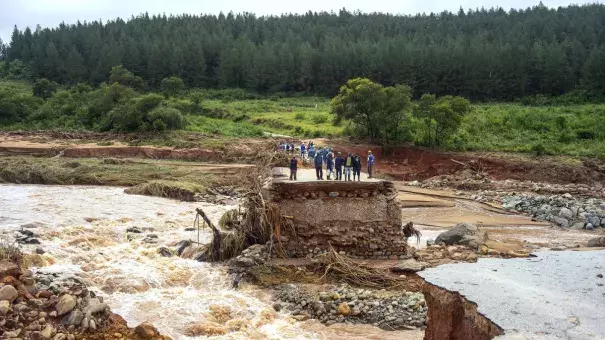Cyclone Idai lays bare the fundamental injustice of climate change

A humanitarian catastrophe is underway in Mozambique, Malawi, and Zimbabwe as the full scale of devastation from Cyclone Idai becomes more clear.
The World Meteorological Organization said Idai, which made landfall five days ago, could become the worst tropical cyclone on record in the Southern Hemisphere. Mozambique President Filipe Nyusi fears that 1,000 people may have died in his country alone. The U.N.’s World Food Program called it “a major humanitarian emergency that is getting bigger by the hour.”
The initial post-storm reports are harrowing: 90 percent of Beira, Mozambique — a city of more than 500,000 people — has been destroyed by floodwaters. The first aid workers to reach the hardest-hit areas found people clinging to trees and rooftops, awaiting rescue, with waters still rising. Social media posts from Zimbabwe showed people swept away on flooded roads and aerial images in Mozambique showed countless homes underwater. Nearly 3 million people have been affected across the region, one of the poorest in the world.
Cyclone Idai is not a natural disaster; the storm was made worse by climate change, centuries of colonialism, and continuing international injustices.
There are at least three major ways that the Mozambique floods are related to climate change: First, a warmer atmosphere holds more water vapor, which makes rainfall more intense. Idai produced more than two feet of rainfall in parts of the region — nearly a year’s worth in just a few days. Second, the region had been suffering from a severe drought in recent years in line with climate projections of overall drying in the region, hardening the soil and enhancing runoff. Third, sea levels are about a foot higher than a century ago, which worsens the effect of coastal flooding farther inland.


